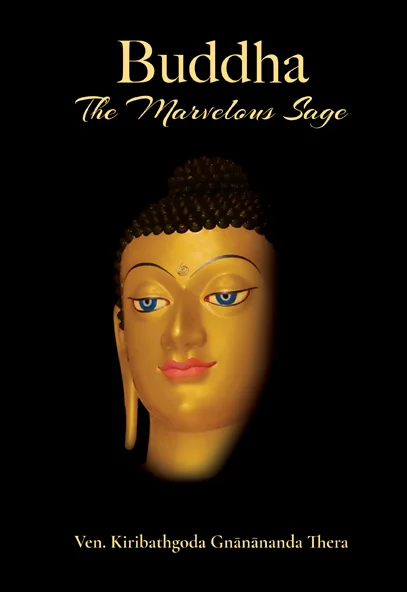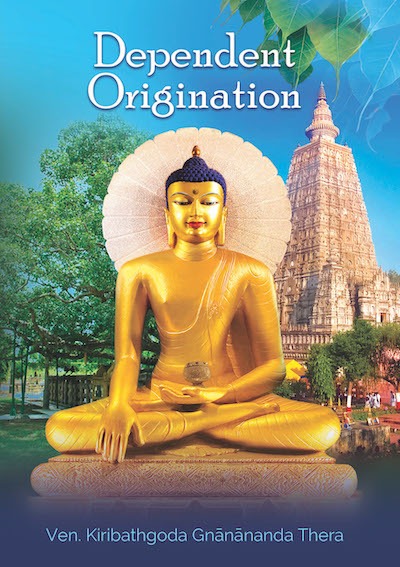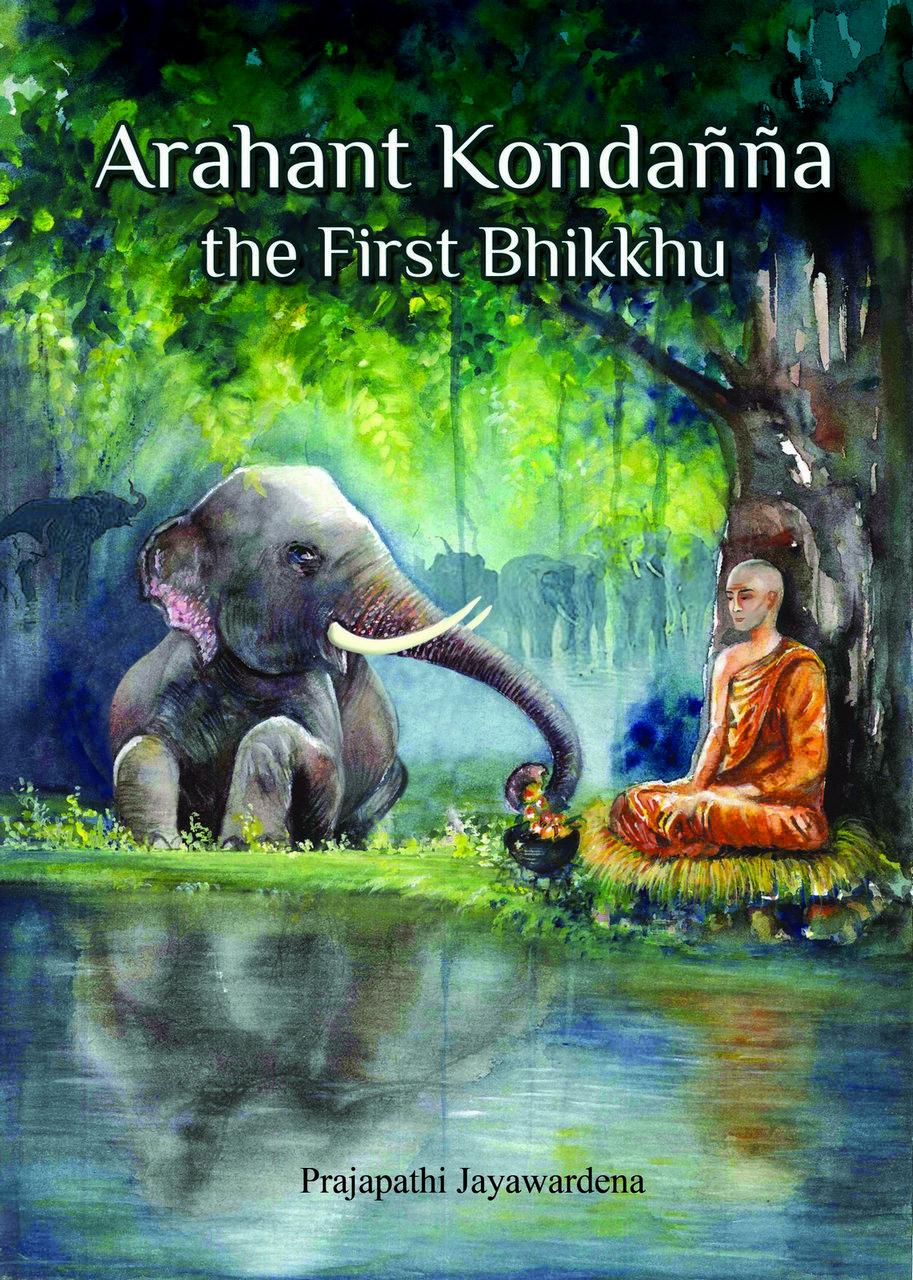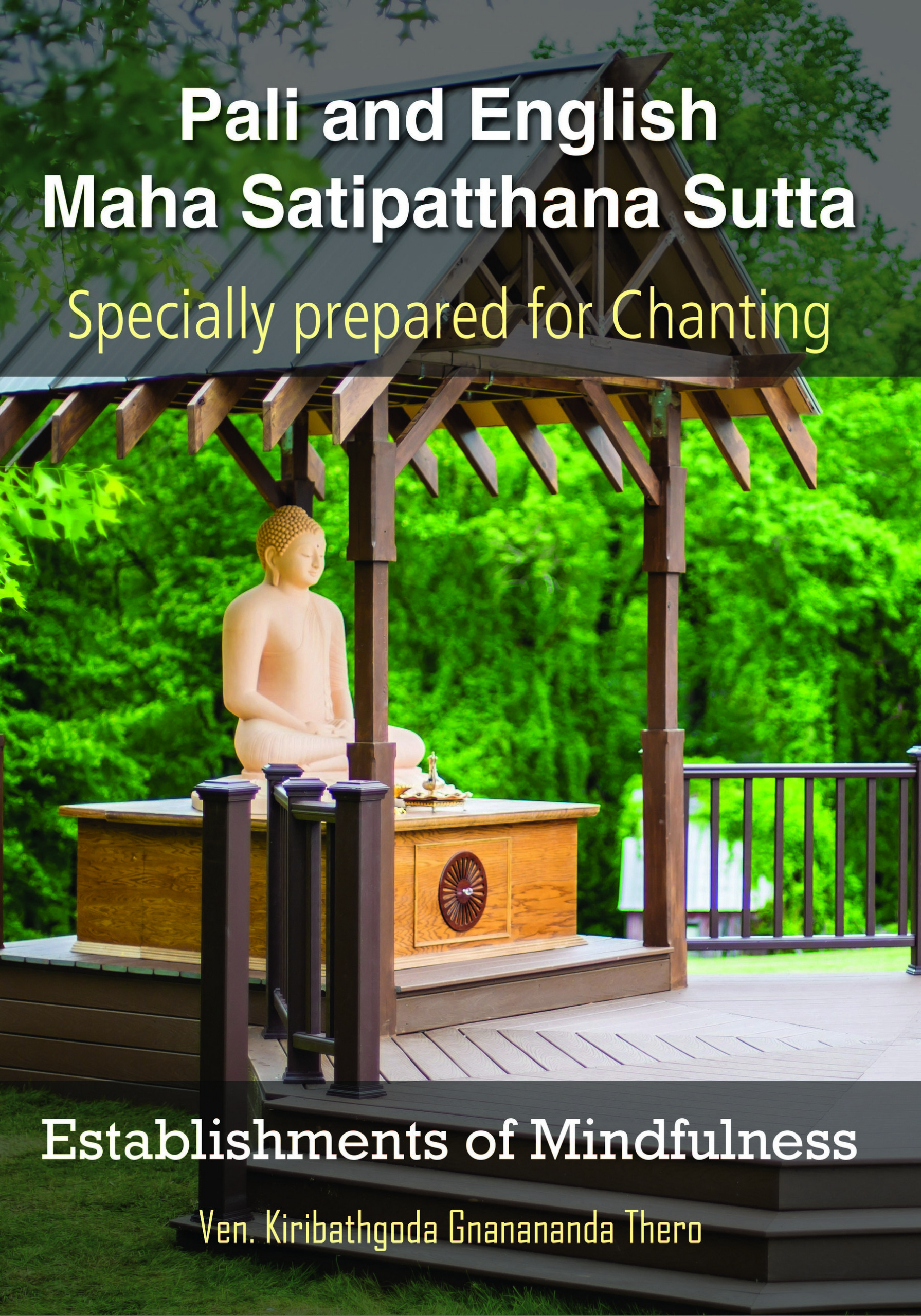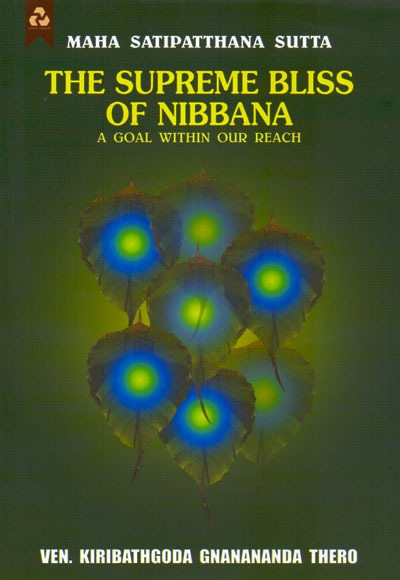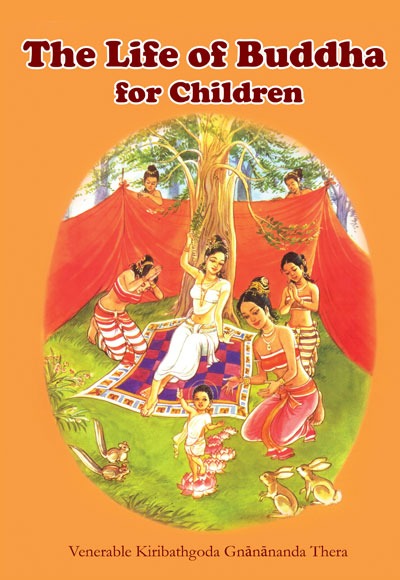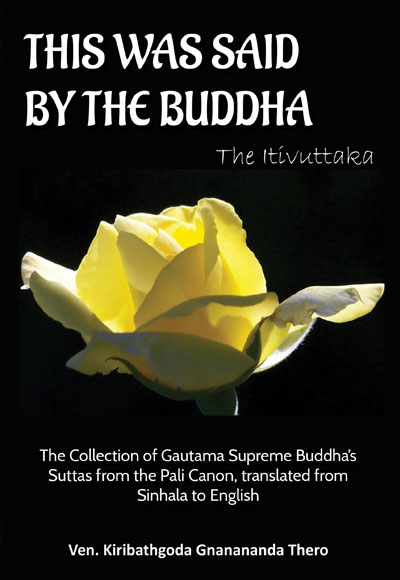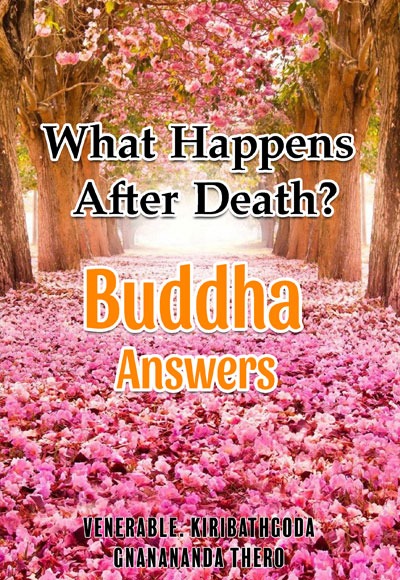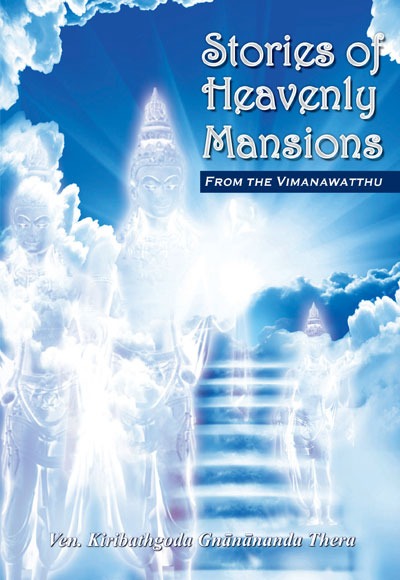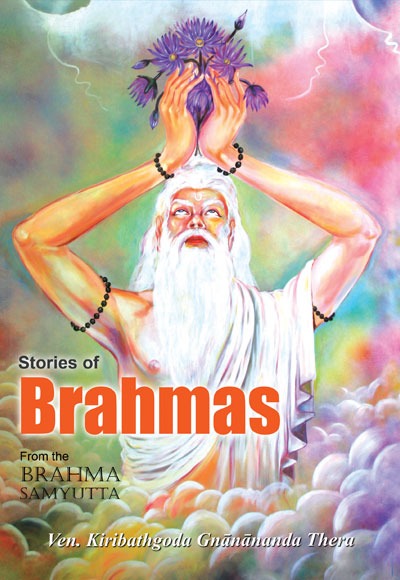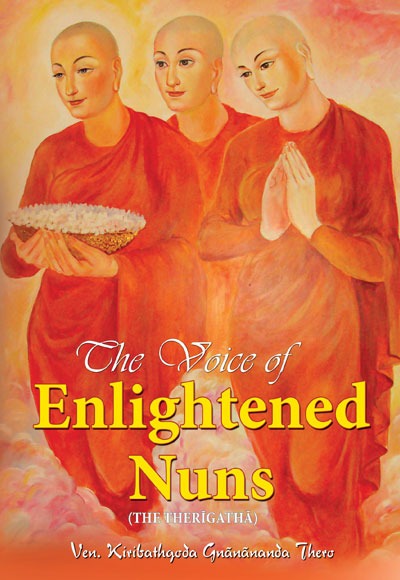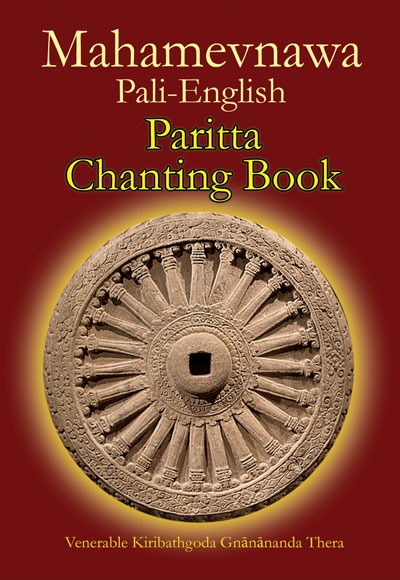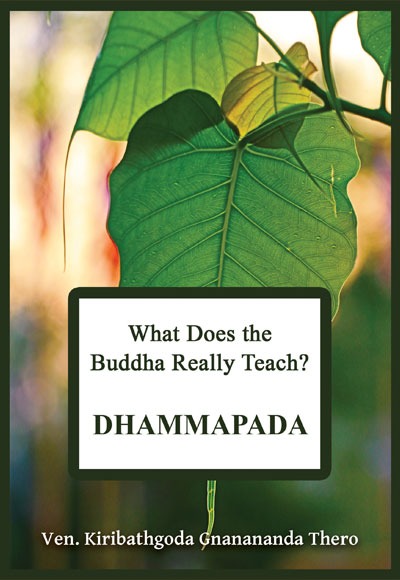This is a collection of Dhamma talks that explains some of the most valuable Buddhist scriptures. It is suitable for anyone interested in bring the teachings into their lives in an authentic way.
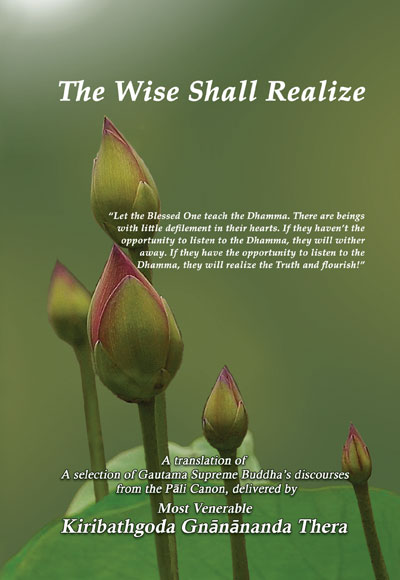
In Sri Lanka
All of these books are available at the book shops in our monasteries and our online store Mahamegha.store
In Colombo they are available at the Tripitaka Sadaham Poth Medura in the YMBA building on Austin Place. Phone 01 14 255 987.
To the Reader
Mittāmacca Sutta: The Real Assurance to Life
Mahānāma Sutta: The Householder’s Path to Nibbāna
Mahādukkhakkhandha Sutta: Beyond Gratification
Mālunkyaputta Sutta: Reject Sensuality
Gautama Sutta:The Blessed One’s Investigative Struggle for Enlightenment
Ānanda Sutta: Leading to Awakening
Lokuswaminwahanse’s Journey: Seeking the Noble Eightfold Path
Abbreviations
Mittāmacca Sutta: The Real Assurance to Life
SAMYUTTA NIKĀYA 55:16
We must try to see this life for what it actually is. This human life is a very rare one, so as quickly as possible we must try to understand the reality of life through the Supreme Buddha’s Teachings.
The Danger of an Ordinary Life
According to the the Supreme Buddha’s Teachings, all beings in all worlds (the human world, the heavenly world, the animal world, the ghost world and hell), can be placed into two categories. The first is ordinary people. There is grave danger with an ordinary life. The Supreme Buddha explained the danger of an ordinary life. Those leading ordinary lives do not know about the Supreme Buddha, and they are not skilled in the Buddha’s Teachings. They do not know how to follow the Path to escape suffering, and they do not know about the realities of life. The danger of an ordinary life is that at any moment after this life – after the dissolution of the body, they will be re-born in the animal world, in hell, or in the ghost world. That is the danger that ordinary people face after the current life. They will not be able to escape suffering.
The Supreme Buddha explained that this Dhamma (Buddha’s Teachings) is for the wise, not for the unwise. The wise refers to those who have the ambition in their lives to escape suffering. That is the key to learning the Supreme Buddha’s Teachings. Therefore, this is a great opportunity to understand suffering, to eradicate the cause of suffering, and to follow the Path that leads to real happiness in this very life.
The Blessings of a Noble Friend
The second category is noble people. Noble people are followers of the Supreme Buddha. The first step is to associate with noble friends. Noble friends are people who want to escape suffering and spend time thinking about how to escape suffering. They want to follow the Path taught by the Supreme Buddha to escape suffering. Those friends are called noble friends. The opportunity to hear the Dhamma is the advantage of associating with noble friends. By listening to the Dhamma, we will be able to achieve real happiness. In many of the Supreme Buddha’s Teachings, Buddha explained that noble friends are very rare in the world. Because noble friends are very rare, the chance to hear the Dhamma is also rare. Therefore, the opportunity to escape from suffering is a very rare opportunity. Before our death, we must realize this great opportunity.
The Supreme Buddha explained that by developing four factors, one will be able to achieve the first stage of wisdom called the Stream Entrant (Sotāpanna). This is the first stage of developing wisdom through the Supreme Buddha’s Teachings. Then, by developing the same four factors further, one will be able to achieve the next stage, which is called the Once-Returner (Sakadāgāmi).
All conditions necessary to escape suffering depend on wisdom. By developing those same four factors even further, one will be able to achieve the next stage, which is called the Non-Returner (Anāgāmi). By developing the same four factors to the highest level, one will be able to achieve the last stage, the ultimate deliverance and the goal of real happiness, the Arahant.
An ordinary life is very dangerous. The only things we can expect with an ordinary life are aging and death. In a noble life, a noble person as a follower of the Supreme Buddha, will always try to understand suffering. Suffering is the fundamental truth that needs to be understood in the Supreme Buddha’s Teachings. There are Four Truths and they are all noble. The first Noble Truth is suffering. The noble disciple of the Supreme Buddha is trying to understand suffering, and that is ‘the wisdom’.
Earlier, we tried to understand the danger of an ordinary person. What is that danger? It is that, after death, he will be born in a bad destination. With a noble person’s life, there is a very good opportunity to escape from hell, to escape from the animal world, to escape from the ghost world and to escape from all bad destinations. For that to happen, we must achieve some goals in this very life.
The Stream Entrant – Sotāpanna
The first goal is to achieve the Stream Entrant stage. If you can achieve that stage, the Supreme Buddha, our Great Teacher, explained that you are definitely a fortunate person, and you have already escaped from all bad destinations.
First, we must develop four factors. Associating with noble friends is the first factor. Listening to Dhamma through the association of noble friends is the second factor. The third factor is developing wise consideration (yonisomanasikara), which means investigating the Dhamma through your own life and with your own wisdom. The fourth factor is following the Noble Eightfold Path. (SN 55:5)
These factors are related and dependent on each other. Without the association of noble friends, will there be the opportunity to listen to Dhamma? Never. Without listening to the Dhamma, will we be able to develop wise consideration? No. Without developing wise consideration, will we be able to follow the Path? It would be impossible. By cultivating these four factors, one can attain the Stream Entrant stage and escape from all bad destinations.
Additionally, there are four factors that define a person as a Stream Entrant. The first factor is having an unshakable confidence in the Supreme Buddha. We have to understand that this is not mere faith. This is an unshakable confidence obtained through the understanding of the Dhamma, the Buddha’s Teachings, and applying them to one’s life. Can you understand that this is not a mere belief, or ritual worship, or the chanting of some stanzas? This is a deep understanding of the reality of our lives, and it is achieved gradually. If you develop your confidence to an unshakable level, you will have achieved the first factor of a Stream Entrant.
The second factor of a Stream Entrant is having an unshakable confidence in the Dhamma, the Teachings of the Buddha. The third factor of a Stream Entrant is having an unshakable confidence in the Sangha, the noble disciples of the Buddha. The fourth and last factor of a Stream Entrant is following the Five Precepts. Without breaching, and with mindfulness, you must follow the Five Precepts.
All these factors are detailed in the Supreme Buddha’s Teachings. In this very life, we are fortunate to have the opportunity to develop these factors. This is what we must realize and appreciate.
The Shell of Ignorance
The Supreme Buddha explained that one’s life is like an egg. What is the nature of eggs? There is a hard shell. The Supreme Buddha explained that our lives are like eggs covered with hard shells (Vinaya Pitaka). That shell is ignorance. Ignorance means not knowing the Four Noble Truths. Though we laugh and enjoy ourselves with many worldly things, we are still inside that shell. Because of this ignorance, upon our death we will be reborn in the animal world or hell. Without knowledge of the Buddha’s Teachings, all beings in this world are in that shell. They are covered with that hard shell. And as they enjoy life, they think that they are experiencing real happiness, and it is the ‘real’ gratification of life. But, they do not know real happiness, and they do not know that they are still inside that shell of ignorance. Very rarely, does one have the opportunity to break that shell.
By breaking the shell of ignorance, we will be able to achieve true knowledge, called vijjā, in the Pāli language.Avijjā means ignorance. What is the meaning of ignorance? Not knowing the Four Noble Truths is ignorance. So, what is the meaning of true knowledge? Knowledge of the Four Noble Truths is true knowledge.
This is a very rare opportunity to gradually break the shell of ignorance. If you break through the shell, then real happiness will emerge. That is why the Supreme Buddha explained, “Bhikkhus, I am the First One, I am the Eldest One, I am the Greatest One to break that shell and come out”. Buddha advised that we should also follow the same Path, for there is real happiness to be achieved, but it is outside of that shell. We have to achieve something in our lives; we have to attain something. This is not just an ordinary life, with aging and death, but a great life with an opportunity to develop our own wisdom with the help of our Great Teacher, the Supreme Buddha.
Can you remember the four factors of a Stream Entrant, which can be achieved in this very life? They are:
1. an unshakable confidence in the Supreme Buddha,
2. an unshakable confidence in the Dhamma – the Supreme Buddha’s Teachings,
3. an unshakable confidence in the Sangha – the Noble Disciples, and
4. observance of the Five Precepts, without breach.
Do not forget that this is not just confidence. It has to be an unshakable confidence. To develop an unshakable confidence, you have to gradually learn the Supreme Buddha’s Teachings.
Developing an unshakable Confidence in the Supreme Buddha
The Supreme Buddha explained that unshakable confidence in the Supreme Buddha refers to confidence about the Supreme Buddha’s knowledge. unshakable confidence is developed based on understanding the knowledge of the Supreme Buddha. Saddhā means ‘confidence’. This is the Pāli term that the Supreme Buddha used for unshakable confidence. Tathāgatassa bodhi means ‘the knowledge of the Supreme Buddha’. Saddahati tathāgatassa bodhi means ‘unshakable confidence in the knowledge of the Supreme Buddha’. What is that knowledge? By examining the great qualities of the Supreme Buddha, one can understand the knowledge of our Great Teacher.
Firstly, we must understand that our Great Teacher was an Arahant. An Arahant is one who has eradicated all bad conditions of the mind, which include: passion, lust, desire, hatred, ill will, delusion, and all other defilements of the mind. There should be an unshakable confidence about that quality of our Great Teacher. That unshakable confidence is developed by knowing that in this world, and throughout all worlds, there is no other teacher with this Arahant quality.
The second quality of our Teacher is Sammā Sambuddho. Sammā Sambuddho means that our Great Teacher understood the Four Noble Truths without anyone’s help. So our Great Teacher is really the one and only Teacher. What is the significance of the Four Noble Truths? These Truths explain the realities of life. Our Great Teacher understood the realities of life, without anyone’s help. By knowing this, we can establish an unshakable confidence based on this second quality.
The third quality is vijjācaranasampanno. Vijjā means ‘true knowledge’. There are three kinds of knowledge. Firstly, the Supreme Buddha, our Great Teacher had knowledge of the past lives of beings. Through this knowledge the Supreme Buddha knew that this is a long journey through samsāra (the cycle of birth and death). The second knowledge our Great Teacher had was the passing away and the reappearing of beings. There should be a confidence based on both these kinds of knowledge. Because of that knowledge, we can be sure that if we do not try to achieve the Stream Entrant stage in this life, our next destination will not be a good one. The third knowledge that the Supreme Buddha had was the knowledge of the destruction of all taints (the destruction of all defilements). So, with this true knowledge, our Great Teacher had excellent virtue, excellent concentration, excellent wisdom, and excellent liberation. And that is called vijjācaranasampanno – the one and only Teacher in this world.
The fourth quality is sugata. Su means ‘the correct path’.Gatha means ‘followed’. Therefore, sugata means ‘following the correct path’. The Supreme Buddha followed the best path, the Noble Eightfold Path, and achieved the bliss of Nibbāna (ultimate liberation).
The fifth quality is lokavidu. Lokavidu means ‘knower of the worlds’. It is the one who understands the origin of all worlds, understands the cessation of all worlds, and understands how to escape from all worlds.
The sixth quality is anuttaro purisadammasārathi. Anuttara means ‘excellent’. It means ‘exalted’, there is no one else. Purisadammasārathi means ‘Buddha is the Teacher of people to be tamed’. What is the way of taming? The Supreme Buddha’s way of taming is with virtue, concentration and wisdom, and without any weapons. Even today, we are tamed by those great qualities. We are following the Path of virtue (precepts and good discipline), we are following the Path of concentration, and we are following the Path of wisdom.
The seventh quality is satthā devamanussānam. Satthā devamanussānam means ‘the Teacher of gods and humans’. We have to clearly understand that our Great Teacher is not only the Teacher of humans, but also the Teacher of gods. If we are able to achieve the Stream Entrant stage in this very life, the Supreme Buddha explained that we will be re-born in the heavenly world. The Dhamma, the Teachings of the Buddha, exists in the heavenly worlds.
The eighth quality is Buddha. Buddha means ‘one who has understood the Four Noble Truths without anyone’s help, and is able to proclaim the Dhamma to others’. Buddha means one who teaches without holding anything back; with great compassion and with great loving kindness, so that others may understand the Four Noble Truths and achieve real happiness.
The ninth quality is Bhagavā. Bhagavā means ‘the Blessed One’. This means that our Great Teacher, is the one and only teacher who held all of these qualities. These are the great qualities of the Supreme Buddha. Because of these qualities, we can develop an unshakable confidence in the Supreme Buddha.
There are more than 18,000 discourses of the Supreme Buddha’s Teachings. I am explaining these Teachings from the original discourses. The Supreme Buddha is our Teacher and we are the followers. The Supreme Buddha discovered the Path, and that is why the Supreme Buddha is our Great Teacher. Step by step, by listening to those discourses and studying the Dhamma, we have the opportunity to develop the confidence in the Arahant quality. Over and over, we must reflect to secure that confidence. In the discourses, the supreme qualities of the Buddha are revealed.
Developing an Unshakable Confidence in the Dhamma
The first factor of a Stream Entrant is an unshakable confidence in our Great Teacher. The second factor is an unshakable confidence in the Supreme Buddha’s Teachings, the Dhamma. We must understand the qualities of the Supreme Buddha’s Teachings. By understanding the qualities of the Dhamma, we will be able to compare it with other teachings, and we will realize that these are the great Teachings. We must also be able to see the difference between the original teachings of the Supreme Buddha and other misrepresentations.
The first quality of the Dhamma is svākkhāto bhagavatā dhammo. Svākkhata means that the Supreme Buddha’s Dhamma is well proclaimed, from beginning to end. That means that there is an excellent beginning, an excellent middle and an excellent end.
Now, let me talk about everyday science for a moment. Is there an end to science? No, it is always changing and there is no end. In the Supreme Buddha’s Teachings, there is a clear end. There is a very clear goal. There is a very clear aspiration. And, there is a very clear Path – the Noble Eightfold Path. Only the Supreme Buddha’s Teachings have these qualities. The Supreme Buddha’s Teachings have an excellent beginning, an excellent middle and an excellent end. What is the excellent beginning? The excellent beginning is virtue or morality. What is the excellent middle? The excellent middle is concentration. What is the excellent end? The excellent end is wisdom.
The second quality is sanditthika. Sanditthika means that this Dhamma is to be realized here and now, in this very life. That is why some have the goal of wanting to achieve Nibbāna in this very life. These goals are not for the next life, but are for this life. These goals can be attained in this very life. Other teachings do not have this quality.
The third quality is akālika. Akālika means that this Dhamma is immediately effective. If you follow the Five Precepts (virtue) at this moment, the results will be there in the next moment. If you practise concentration now, the results will be there in the next moment. If you try to obtain wisdom now, the results will be there in the next moment. There is no delay. Why is that? It is because this Dhamma is akālika.
The Supreme Buddha has explained in the Doctrine that aging and death are because of birth. Dependent on birth, aging and death arise (Dependent Arising – Paticca Samuppāda). In the past, what happened with our grandmothers’ and grandfathers’ lives? There was aging and death because of birth. Let’s think about the future, and think specifically about our sons’ and daughters’ lives. There will be aging and death because of birth. What is the doctrine? It is the same doctrine. With our own life, it is the same reality. This quality of the Dhamma is called akālika – it doesn’t change with time.
The fourth quality is ehipassika. Ehipassika means that we can invite everyone to come and see this Dhamma through their own lives. Within any other religion, can they make the same claim No, they cannot say, “come and see”. They would have to say, “come and believe”. This Dhamma is to come and see, come and understand, and come and realize.
The fifth quality is opanayika. Opanayika means that this Dhamma is to be experienced through one‘s own life. It is because this Dhamma is about our own eyes, our own ears, our own nose, our own tongue, our own body and our own mind.
The sixth quality is paccattam veditabbo viññūhīti. That means that this Dhamma is for the wise to understand, individually – through their own effort.
These are the great qualities of the Dhamma. Because of these qualities, we can develop an unshakable confidence in the Dhamma.
Developing an Unshakable Confidence in the Sangha
The third factor of a Stream Entrant is an unshakable confidence in the Sangha. We must recognize the great qualities of the followers of the Supreme Buddha. These are the Noble Disciples who are trying to achieve happiness in this very life and are trying to develop their wisdom.
The first quality of the Sangha is supatipanna. Supatipanna means that they follow the path to eradicate passion, lust, ill-will, hatred, and delusion. This is the first quality of the Supreme Buddha’s followers. The Arahant quality meant that our Great Teacher eradicated lust towards forms, towards sounds, towards odours, towards tastes, towards tangibles, and towards mind-objects. The followers are also trying to do the same. That is called supatipanna. One must recognize that this is the only community who is trying to eradicate lust towards forms, sounds, odours, tastes, tangibles and mind-objects, and they are following the Noble Eightfold Path to achieve this goal.
The second quality is ujupatipanno. Uju means ‘the straight way’. The Sangha is following the straight way, which is the Noble Eightfold Path. In this world, the Sangha is the only community who follows the straight way. The Path leading to the cessation of suffering is one of the Four Noble Truths. They are trying to follow the Noble Eightfold Path with: Right View, Right Intention, Right Speech, Right Action, Right Livelihood, Right Effort, Right Mindfulness and Right Concentration. Those that follow this Path are called the followers of the Supreme Buddha.
The third quality is ñāyapatipanno. Ñāyapatipanno means that the Sangha is following the Path to understand the Four Noble Truths. The Teacher is the one who understood the Four Noble Truths, and the followers are also trying to understand the Four Noble Truths.
The fourth quality is sāmīcipatipanno. Sāmīcipatipanno means the followers of the Supreme Buddha teach the Dhamma to others. And, followers who hold all these qualities, are worthy of receiving offerings and reverence.
These are the great qualities of the Sangha. Because of these qualities, we can develop an unshakable confidence in the Sangha.
Developing Moral Discipline
The fourth factor of a Stream Entrant is observance of the Five Precepts. These are:
- abstaining from killing beings,
- abstaining from taking that which is not given (stealing),
- abstaining from sexual misconduct,
- abstaining from false speech, and
- abstaining from taking intoxicating drinks and drugs.
True Love and Compassion
The Supreme Buddha advises that if one has love and compassion for another (for example, for one’s parents, relatives and friends), then one should teach them the factors of a Stream Entrant. These factors are:
1. an unshakable confidence in the Buddha,
2. an unshakable confidence in the Dhamma,
3. an unshakable confidence in the Sangha, and
4. following the Five Precepts in an unbreakable way.
If someone has achieved these factors, then after this life, they will avoid being born in a bad destination (in hell, animal and ghost worlds), and can reach the ultimate liberation of Nibbāna within a maximum of seven births. This is the real assurance to life, and it all begins with having noble friends.
Sādhu! Sādhu! Sādhu!
We have been taught these discourses of the Supreme Buddha by our teacher. May Lokuswaminwahanse have the opportunity to fully realize the Four Noble Truths.
May you have the opportunity to understand the Four Noble Truths in Gautama Sammā Sambuddha’s Dispensation.

